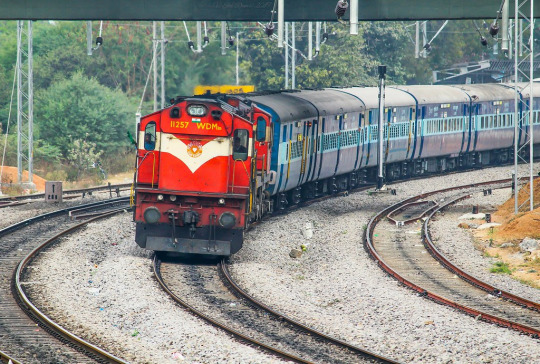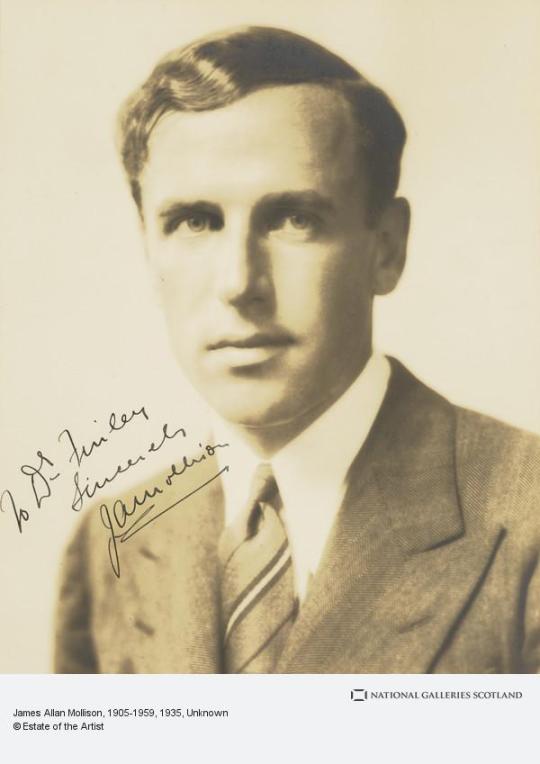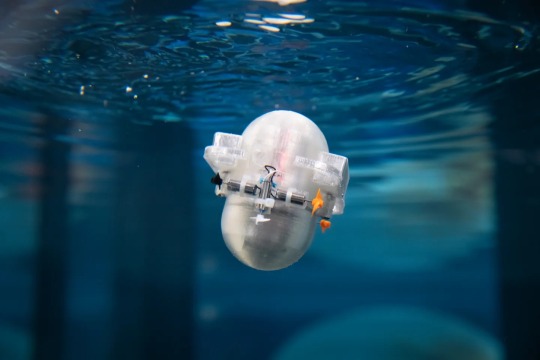#Engineering Services in South India
Explore tagged Tumblr posts
Text

#Mechanical engineering services in South India#Engineering Services in South India#Mechanical engineering services in Bangalore
2 notes
·
View notes
Text
Digital Marketing Agency South Delhi | Social Media & SEO in Kalkaji | Online Marketing Services

We are a Quality Driven Digital Marketing Agency in Kalkaji, South Delhi, India. Uni Square Concepts provides professional Social Media, SEO & other top digital marketing services.
#Uni Square Concepts#Digital Marketing Agency South Delhi#Digital Marketing Agency India#Digital Media Company in Kalkaji#Social Media Marketing#Search Engine Optimization#Website Designing#Blogs#Newsletter#Bulk E-Mail Campaigns#Search Engine Marketing#SEO#SEM#SMM#Online Marketing Services in Kalkaji#Social Media & SEO Agency in South Delhi
0 notes
Text
Train fact: NAMED TRAINS!
So you've probably heard of the Flying Scotsman. Big green thing, turned 100 this year, probably the most famous locomotive in the UK, if not the world. Adapted into Thomas the Tank Engine with a whole lot of charisma and eyebrows. But did you know that name wasn't hers originally?
'The Flying Scotsman' is actually the name (formerly a nickname) of the train. The locomotive is Flying Scotsman's monster named for it. She was given the name in 1924, to help promote said service at the British Empire exhibition. Any engine, with any rack of coaches, or any train set, can be the Flying Scotsman.
Right now, it's run by LNER's new Azumas, which get a special little outfit about it:


Most of the named trains in the UK were phased out with steam (although you can still catch the Sheffield continental from Sheffield to St. Pancras, or the Northern Lights from King's Cross to Aberdeen, among a handfull of others) but they live on elsewhere.
Some are luxury touring trains, like Japan's Seven Stars in Kyushu (left) or South Africa's Blue Train (right).


Transport isn't really the goal here. They sell out months in advance and cost anywhere from hundreds to thousands of dollars, depending on the class of ticket you get. They're an Experience, and a very cushy experience at that. Just look at their interiors!


(yes, that's a piano)
But the vast majority of named trains in operation (as far as I can tell) are regularly-running exepress services across Asia.
Japan names their Shinkanens, India, Pakistan, Bengladesh & Sri Lanka often name their intercity expresses. These are practical, long-distance services, often named for monuments, like India's Ajanta Express, named for the Ajanta caves:


Or their operating regions, like Sri Lanka's උත්තර දේවී | Princess/Queen of the North:

Some North American countries also kept historic named routes, like Amtrak's Sunset Limited, or Canada's Ocean, which has operated continuously since 1904:

but my personal favorite named services are Australia's historically-nicknamed "The Fish", named after one of its drivers:

and the numerous trains that have been companion-nicknamed "The Chips" to match.
#Train facts!#ids in alt text#Sri Lanka Railways#LNER#modern LNER! Modern LNER! I know!#South Central Railway#Indian railways#NSW Train Link#via rail canada#the blue train#seven stars in kyushu#LNER Azuma
170 notes
·
View notes
Text
Scientific knowledge and technology played a significant role in the expansion of colonial rule in India and the consequent incorporation of the Indian sub-continent into the [commercialized, imperial] world-system [...]. The colonization of nature, territory and people in British India led to a mutually constitutive interplay [...].
By the time the East India Company managed to establish a foothold in Bengal in 1757, [...] [a]fter the acquisition of the formal rights to collect revenues in the states of Bengal, Bihar and Orissa, the issue of obtaining accurate information about the extent of the produce, the population and other social statistics assumed significance. The detailed scientific surveys [...] were possible due to the large number of amateur scientists employed by the Company. Over time, these surveys played a major role in the transformation of a trading company into a colonial state [...] and the incorporation of India into the modern world-system. [...]
---
Considered the founder of British geography, James Rennell arrived in India in 1760 barely three years after the decisive battle of Plassey. Rennell’s cartographic skills caught the attention of the governor of Bengal presidency, who was ‘anxious to inaugurate some system for correcting and revising the geography of Bengal’ [...]. Rennell’s mapping out in great detail the area under the Company was indispensable for the rationalization of the extraction of surplus, administrative strategies and techniques of control. [...] In 1777 he left for England, and two years later he published the Bengal Atlas that led to his election to the Royal Society. [...] With reference to the ‘science wars’, [...] Rennell’s work was also incorporated in the key text[s] of the time, C. Lyell’s Principles of Geology (1830) [...] [and] the work of [...] Humboldt and Carl Ritter. Rennell’s surveys contributed to the organized [...] surveys [across wider regions of India] that followed after the defeat of Tipu Sultan of Mysore in 1799. [...] [Mysore's] sustained resistance to British power had a major impact on the general consciousness in Britain. [...]
Thomas de Quincey extolled the virtues of the ‘British bulldog’ against [...] the tyrannical ‘Bengal tiger’ [...]. The scientific knowledge that emerged as a consequence of the surveys of Mysore contributed [...] to the consolidation of administrative power [...]. The key figures associated with the surveys [included] Colin Mackenzie [...]. Mackenzie’s ethnographic notes contributed to imperial perceptions of the [...] [people of South Asia] and the grid of anthropological knowledge through which administrative power was deployed. [...]
---
Nature, culture and colonial power were inextricably implicated in the production of scientific knowledge and of colonial society. [...] The establishment the Public Works Department in 1854 provided fresh impetus for the deployment of science and technology in grappling with problems precipitated by colonial rule. Declining revenues for the Company focused attention on gigantic irrigation and other public works projects. [...]
The irrigation projects were expanded to include the railways (1849), the telegraph (1852), and the postal system (1850). Together, they represented the largest state-sponsored enterprise undertaken anywhere at that time. Lord Dalhousie, under whose tenure these projects were inaugurated, declared the railways, the telegraph and the postal system as the ‘three great engines of social improvement’.
His predecessor William Bentinck had already termed the railways ‘the great engine of moral improvement’ in a country ‘cursed from one end to the other by the vice, the ignorance, [...] the barbarous and cruel customs that have been the growth of ages under every description of Asian misrule’ [...]. Later observers were to wax ever more eloquent on the role of the railways in the modernization of India. For W. A. Rogers of the Indian Civil Service, railways ‘are opening the eyes of the people … they teach them that speed attained is time, and therefore money, saved or made’ (Adas1989: 226). The importance of a network of railways, connecting the cotton plantations of the Deccan region to the ports became significant especially during the 'cotton famine' of 1846 [...].
---
Almost immediately after Dalhousie left India, secure in the belief that the double engines of moral improvement and legitimacy were at work, the rebellion of 1857 put an end to such expectations. The rebellion was partly triggered in response to the wide-ranging transformations [...] triggered off by the introduction of [these] new [colonial infrastructures] [...].
In the end, the rebellion was violently suppressed by the very technologies that had precipitated it in the first place. [...]
---
All text above by: Zaheer Baber. "Colonizing nature: scientific knowledge, colonial power and the incorporation of India into the modern world-system". British Journal of Sociology 52(1), pages 37-58. April 2001. [Bold emphasis and some paragraph breaks/contractions added by me. Presented here for commentary, teaching, criticism purposes.]
#ecology#abolition#multispecies#landscape#geography#temporal#temporality#colonial#imperial#tidalectics#indigenous#archipelagic thinking#intimacies of four continents#plantations#carceral geography#opacity and fugitivity#indigenous pedagogies#black methodologies
38 notes
·
View notes
Text



James Allan Mollison was born on April 19th 1905 in Glasgow.
Graeme Obree, Chris Hoy and a certain steam train have all bee called The Flying Scotsman in their time, but the original title goes to a man who actually did fly, Jim Mollison.
Jim would go on to become a pioneering aviator, breaking records for long distance flights. His marriage to fellow aviator Amy Johnson also saw them lauded as the golden couple during their time together.
Born the only child of Hector Alexander Mollison, a consultant engineer, and Thomasina Macnee Addie. He was educated at The Glasgow Academy and Edinburgh Academy and took an early interest in flying and obtaining his Royal Air Force (RAF) Short Service Commission at 18, he was the youngest officer in the service, and upon completion of training was posted to India, flying on active service in Waziristan.
At the age of 22, Mollison became a flying instructor at Central Flying School (CFS), again setting the record for being the youngest in this role. Shortly after, he transferred to the RAF Reserve and devoted his time to civil aviation. In 1928-29, he served as an instructor with the South Australian Aero Club in Adelaide, leaving that position to become a pilot with Eyre Peninsular Airways and Australian National Airways.
In July-August 1931, Mollison set a record time of eight days, 19 hours for a flight from Australia to England, and in March 1932, a record for flying from England to South Africa in 4 days, 17 hours flying a de Havilland Puss Moth.
Mollison eventually served in the ATA Air Transport Auxiliary in the Second World War. In June 1941 Mollison and an ATA crew delivered Cunliffe-Owen OA-1 G-AFMB to Fort Lamy, Chad. The aircraft was fitted out as a personal transport for General De Gaulle.
Mollison was feted in London and New York, and could lead the life he had always wanted. “I am a night bird,” he once said. “Life and enjoyment begin when daylight fades. Cocktail bars and clubs, music, beautiful women— that’s living. Daylight comes to me as an interval for sleeping until an afternoon drink helps to bring on another evening.” His autobiography was called “Playboy of the Air”.
When Mollison and Amy Jonson married in 1932 the press were delighted, they were dubbed The Flying Sweethearts by the press and public. . The match was was perfect for the publicity machine, and the two of them set about devising new aviation records: in 1933 they flew together from Wales to New York and had a ticker-tape reception in Wall Street. But marriage did not last long or end well. It has sometimes been assumed that the match was a simple career move on Mollison's part: certainly he did not halt his relationships with other women. Nor did it limit his drinking. As I said earlier, he got the tag “ the Flying Scotsman” but those close to him called him “Brandy Jim”.
As well as his Playboy lifestyle and heavy drinking Jim Mollison was also quick with his fists, and a manager from the Grosvenor House Hotel was reported as saying ” We've had the most awful night here. Jim Mollison and Amy Johnson had a fearful row and he's beaten her up. The bathroom looks like a slaughterhouse.” The marriage officially ended in 1938.
Mollison kept flying, and – like Johnson – flew in a non-combat role in WWII. Both of them flew in the Air Transport Auxiliary. Johnson died in 1941 after baling out of aircraft. Mollison had at least one close escape, when his plane was shot up, but survived the war.
Mollison later settled in London and ran a public house. He married Maria Clasina E. Kamphuis in 1949 at the Maidenhead Register Office. Mollison continued to abused alcohol and in 1953, the Civil Aviation Authority Medical Board revoked his pilot's licence. The couple separated but Maria bought the Carisbrooke Hotel in Surbiton for him – a temperance hotel.
Suffering from acute alcoholism, he was admitted to The Priory, Roehampton, southwest London, where he died on 30 October 1959, the official cause of death was pneumonia, but unofficially it was thought to be alcoholic epilepsy.
12 notes
·
View notes
Text
Across a sterile white table in a windowless room, I’m introduced to a woman in her forties. She has a square jaw and blonde hair that has been pulled back from her face with a baby-blue scrunchie. “The girls call me Marmalade,” she says, inviting me to use her prison nickname. Early on a Wednesday morning, Marmalade is here, in a Finnish prison, to demonstrate a new type of prison labor.
The table is bare except for a small plastic bottle of water and an HP laptop. During three-hour shifts, for which she’s paid €1.54 ($1.67) an hour, the laptop is programmed to show Marmalade short chunks of text about real estate and then ask her yes or no questions about what she’s just read. One question asks: “is the previous paragraph referring to a real estate decision, rather than an application?”
“It’s a little boring,” Marmalade shrugs. She’s also not entirely sure of the purpose of this exercise. Maybe she is helping to create a customer service chatbot, she muses.
In fact, she is training a large language model owned by Metroc, a Finnish startup that has created a search engine designed to help construction companies find newly approved building projects. To do that, Metroc needs data labelers to help its models understand clues from news articles and municipality documents about upcoming building projects. The AI has to be able to tell the difference between a hospital project that has already commissioned an architect or a window fitter, for example, and projects that might still be hiring.
Around the world, millions of so-called “clickworkers” train artificial intelligence models, teaching machines the difference between pedestrians and palm trees, or what combination of words describe violence or sexual abuse. Usually these workers are stationed in the global south, where wages are cheap. OpenAI, for example, uses an outsourcing firm that employs clickworkers in Kenya, Uganda, and India. That arrangement works for American companies, operating in the world’s most widely spoken language, English. But there are not a lot of people in the global south who speak Finnish.
That’s why Metroc turned to prison labor. The company gets cheap, Finnish-speaking workers, while the prison system can offer inmates employment that, it says, prepares them for the digital world of work after their release. Using prisoners to train AI creates uneasy parallels with the kind of low-paid and sometimes exploitive labor that has often existed downstream in technology. But in Finland, the project has received widespread support.
“There's this global idea of what data labor is. And then there's what happens in Finland, which is very different if you look at it closely,” says Tuukka Lehtiniemi, a researcher at the University of Helsinki, who has been studying data labor in Finnish prisons.
For four months, Marmalade has lived here, in Hämeenlinna prison. The building is modern, with big windows. Colorful artwork tries to enforce a sense of cheeriness on otherwise empty corridors. If it wasn’t for the heavy gray security doors blocking every entry and exit, these rooms could easily belong to a particularly soulless school or university complex.
Finland might be famous for its open prisons—where inmates can work or study in nearby towns—but this is not one of them. Instead, Hämeenlinna is the country’s highest-security institution housing exclusively female inmates. Marmalade has been sentenced to six years. Under privacy rules set by the prison, WIRED is not able to publish Marmalade’s real name, exact age, or any other information that could be used to identify her. But in a country where prisoners serving life terms can apply to be released after 12 years, six years is a heavy sentence. And like the other 100 inmates who live here, she is not allowed to leave.
When Marmalade first arrived, she would watch the other women get up and go to work each morning: they could volunteer to clean, do laundry, or sew their own clothes. And for a six hour shift, they would receive roughly €6 ($6.50). But Marmalade couldn’t bear to take part. “I would find it very tiring,” she says. Instead she was spending long stretches of time in her cell. When a prison counselor suggested she try “AI work,” the short, three-hour shifts appealed to her, and the money was better than nothing. “Even though it’s not a lot, it’s better than staying in the cell,” she says” She’s only done three shifts so far, but already she feels a sense of achievement.
This is one of three Finnish prisons where inmates can volunteer to earn money through data labor. In each one, there are three laptops set up for inmates to take part in this AI work. There are no targets. Inmates are paid by the hour, not by their work’s speed or quality. In Hämeenlinna, around 20 inmates have tried it out, says Minna Inkinen, a prison work instructor, with cropped red hair, who sits alongside Marmalade as we talk. “Some definitely like it more than others”. When I arrive at the prison on a Wednesday morning, the sewing room is already busy. Inmates are huddled over sewing machines or conferring in pairs over mounds of fabric. But the small room where the AI work takes place is entirely empty until Marmalade arrives. There are only three inmates in total who regularly volunteer for AI shifts, Inkinen says, explaining that the other two are currently in court. “I would prefer to do it in a group,” says Marmalade, adding that she keeps the door open so she can chat with the people sewing next door, in between answering questions.
Those questions have been manually written in an office 100 kilometers south of the prison, in a slick Helsinki coworking space. Here, I meet Metroc’s tall and boyish founder and CEO, Jussi Virnala. He leads me to a stiflingly hot phone booth, past a row of indoor swings, a pool table, and a series of men in suits. It’s an exciting week, he explains, with a grin. The company has just announced a €2 million ($2.1 million) funding round which he plans to use to expand across the Nordics. The investors he spoke with were intrigued by the company’s connection to Finland’s prisons, he says. “Everyone was just interested in and excited about what an innovative way to do it,” says Virnala. “I think it’s been really valuable product-wise.”
It was Virnala’s idea to turn to the prisons for labor. The company needed native Finnish speakers to help improve its large language model’s understanding of the construction-specific language. But in a high-wage economy like Finland, finding those data laborers was difficult. The Finnish welfare system’s generous unemployment benefits leaves little incentive for Finns to sign up to low-wage clickwork platforms like Amazon’s Mechanical Turk. “Mechanical Turk didn’t have many Finnish-language workers,” says Virnala. At the same time, he adds, automatic translation tools are still no good at Finnish, a language with only 5 million native speakers.
When Virnala pitched his idea to Pia Puolakka, head of the Smart Prison Project at Finland’s prison and probation agency, she was instantly interested, she says. Before the pandemic, another Finnish tech company called Vainu had been using prisoners for data labor. But Vainu abruptly pulled out after a disagreement between cofounders prompted Tuomas Rasila, who had been in charge of the project, to leave the company.
By the time Virnala approached her with his proposal in 2022, Puolakka was eager to resurrect the AI work. Her job is to try and make the relationship between Finnish prisons and the internet more closely resemble the increasingly digital outside world. So far, she has been installing laptops in individual cells so inmates can browse a restricted list of websites and apply for permission to make video calls. She considers data labor just another part of that mission.
The aim is not to replace traditional prison labor, such as making road signs or gardening. It’s about giving prisoners more variety. Data labeling can only be done in three-hour shifts. “It might be tiring to do this eight hours a day, only this type of work,” she says, adding that it would be nice if inmates did the data labeling alongside other types of prison labor. “This type of work is the future, and if we want to prepare prisoners for life outside prison, a life without crime, these types of skills might be at least as important as the traditional work types that prisons provide,” she says.
But how much data labeling offers inmates skills that are transferable to work after prison is unclear. Tuomas Rasila, the now estranged cofounder of Vainu, who managed the prison project there for a year, admits he has no evidence of this; the project wasn’t running for long enough to collect it, he says. “I think asking people, who might feel outside of society, to train the most high-tech aspect of a modern society is an empowering idea.”
However, others consider this new form of prison labor part of a problematic rush for cheap labor that underpins the AI revolution. “The narrative that we are moving towards a fully automated society that is more convenient and more efficient tends to obscure the fact that there are actual human people powering a lot of these systems,” says Amos Toh, a senior researcher focusing on artificial intelligence at Human Rights Watch.
For Toh, the accelerating search for so-called clickworkers has created a trend where companies are increasingly turning to groups of people who have few other options: refugees, populations in countries gripped by economic crisis—and now prisoners.
“This dynamic is a deeply familiar one,” says Toh. “What we are seeing here is part of a broader phenomenon where the labor behind building tech is being outsourced to workers that toil in potentially exploitative working conditions.”
Toh is also skeptical about whether data labor can help inmates build digital skills. “There are many ways in which people in prison can advance themselves, like getting certificates and taking part in advanced education,” he says. “But I'm skeptical about whether doing data labeling for a company at one euro per hour will lead to meaningful advancement.” Hämeenlinna prison does offer inmates online courses in AI, but Marmalade sits blank-faced as staff try to explain its benefits.
Science
Your weekly roundup of the best stories on health care, the climate crisis, genetic engineering, robotics, space, and more. Delivered on Wednesdays.
By the time I meet Lehtiniemi, the researcher from Helsinki University, I’m feeling torn about the merits of the prison project. Traveling straight from the prison, where women worked for €1.54 an hour, to Metroc’s offices, where the company was celebrating a €2 million funding round, felt jarring. In a café, opposite the grand, domed Helsinki cathedral, Lehtiniemi patiently listens to me describe that feeling.
But Lehtiniemi’s own interviews with inmates have given him a different view—he’s generally positive about the project. On my point about pay disparity, he argues this is not an ordinary workforce in mainstream society. These people are in prison. “Comparing the money I get as a researcher and what the prisoner gets for their prison labor, it doesn't make sense,” he says. “The only negative thing I’ve heard has been that there’s not enough of this work. Only a few people can do it,” he says, referring to the limit of three laptops per prison.
“When we think about data labor, we tend to think about Mechanical Turk, people in the global south or the rural US,” he says. But for him, this is a distinct local version of data labor, which comes with a twist that benefits society. It’s giving prisoners cognitively stimulating work—compared to other prison labor options—while also representing the Finnish language in the AI revolution.
Without this kind of initiative, Lehtiniemi worries that non-English languages are being locked out of this next generation of technology. Smart speakers still struggle to understand Finnish dialects. “Not all Finnish people speak English very well, so there's a need for these local forms of data labeling as well,” Lehtiniemi says. Metroc isn’t the only company that has been forced to get creative about finding Finnish data labor. In 2011, the national library created a game to incentivize volunteers to help digitize its archive. In 2020, broadcaster YLE teamed up with Helsinki University and the state development company VAKE to ask volunteers to donate recordings of them speaking Finnish.
There is a sense in Finland that the prison project is just the beginning. Some are worried it could set a precedent that could introduce more controversial types of data labeling, like moderating violent content, to prisons. “Even if the data being labeled in Finland is uncontroversial right now, we have to think about the precedent it sets,” says Toh. “What stops companies from outsourcing data labeling of traumatic and unsavory content to people in prison, especially if they see this as an untapped labor pool?”
It's also not clear whether labor conditions in Finland's prisons—which famously focus on rehabilitation—could be replicated in other countries with a less progressive approach to justice. In the US, 76 percent of prisoners report that prison labor is mandatory, according to civil rights group, the ACLU. “The prison system in the United States is very, very different from what we have in Finland or Nordic countries. It's a completely different idea,” says Rasila. “In Finland, there is an exclusively positive feeling around the project because everyone knows that this is very voluntary.”
AI companies are only going to need more data labor, forcing them to keep seeking out increasingly unusual labor forces to keep pace. As Metroc plots its expansion across the Nordics and into languages other than Finnish, Virnala is considering whether to expand the prison labor project to other countries. “It’s something we need to explore,” he says.
25 notes
·
View notes
Text
Coiled Tubing Insights: A Deep Dive into Services, Operations, and Applications
Coiled Tubing Market Overview:
Request Sample

Inquiry Before Buying
Coiled Tubing Market Report Coverage
The “Coiled Tubing Market Report — Forecast (2024–2030)” by IndustryARC, covers an in-depth analysis of the following segments in the Coiled Tubing Industry. By Service: Well Intervention & Production, Drilling, Perforating, Fracturing, Engineering Services, Milling Services, Nitrogen services and others. By Operations: Circulation, Pumping, Logging, Perforation, Milling and Others. By Technology/Services: Software Solutions, Hardware By Location: On-Shore, Off-Shore By Application: Wellbore Cleanouts, Electrical Submersible Pump Cable Conduit, Fracturing, Pipeline Cleanout, Fishing, Cementing, Nitrogen Jetting and others. By End Use Industry: Oil and gas Industry, Engineering Procurement and Construction Industry, Others By Geography: North America (U.S, Canada, Mexico), South America (Brazil, Argentina, and others), Europe (Germany, UK, France, Italy, Spain, and Others), APAC (China, Japan India, SK, Australia and Others), and RoW (Middle East and Africa)
Schedule a Call
Key Takeaways
North America dominates the Coiled Tubing Market share of 46.6% in 2023, owing to its advanced oil and gas industry, technological innovation, and substantial investments in exploration and production activities.
The development of unconventional resources, such as shale oil and gas, has increased the demand for coiled tubing services. Coiled tubing is often employed in hydraulic fracturing (fracking) operations in these unconventional reservoirs.
Well intervention services, including well cleaning, stimulation, and logging, are major applications of coiled tubing. As older wells require maintenance and newer wells require optimization, as a result growing the Demand for Well Intervention Services using coiled tubing continues to increase.
Buy Now
Coiled Tubing Market Drivers
Increased Exploration and Production Activities
The surge in oil and gas exploration, notably in unconventional resources such as shale, tight gas, and heavy oil, is fueling the demand for coiled tubing services. Integral to well intervention and stimulation procedures, coiled tubing plays a pivotal role in sustaining and augmenting production rates. This heightened exploration and production activity underscores the significance of coiled tubing services in maintaining operational efficiency and maximizing output in the energy sector.
Increasing Energy Demand
The escalating global energy demand propels the coiled tubing market forward. With an ever-growing need for energy resources, particularly in oil and gas sectors, there’s a heightened requirement for efficient extraction methods. Coiled tubing technology offers a versatile and cost-effective solution for various well intervention and drilling operations, catering to the increasing complexities of resource extraction. Its flexibility, mobility, and ability to access challenging environments make it indispensable in meeting the surging energy demands worldwide. As industries strive to optimize production and enhance operational efficiency, coiled tubing emerges as a crucial component in the quest for sustainable energy solutions.
3 notes
·
View notes
Text
Mohandas, who taught himself programming and is based in Bengaluru, India, decided he wanted to develop an alternative service for storing and sharing photos that is open source and end-to-end encrypted. Something “more private, wholesome, and trustworthy,” he says. The paid service he designed, Ente, is profitable and says it has more than 100,000 users, many of whom are already part of the privacy-obsessed crowd. But Mohandas struggled to articulate to wider audiences why they should reconsider relying on Google Photos, despite all the conveniences it offers.
Then one weekend in May, an intern at Ente came up with an idea: Give people a sense of what some of Google’s AI models can learn from studying images. Last month, Ente launched https://Theyseeyourphotos.com, a website and marketing stunt designed to turn Google’s technology against itself. People can upload any photo to the website, which is then sent to a Google Cloud computer vision program that writes a startlingly thorough three-paragraph description of it. (Ente prompts the AI model to document small details in the uploaded images.)
One of the first photos Mohandas tried uploading was a selfie with his wife and daughter in front of a temple in Indonesia. Google’s analysis was exhaustive, even documenting the specific watch model that his wife was wearing, a Casio F-91W. But then, Mohandas says, the AI did something strange: It noted that Casio F-91W watches are commonly associated with Islamic extremists. “We had to tweak the prompts to make it slightly more wholesome but still spooky,” Mohandas says. Ente started asking the model to produce short, objective outputs—nothing dark.
The same family photo uploaded to Theyseeyourphotos now returns a more generic result that includes the name of the temple and the “partly cloudy sky and lush greenery” surrounding it. But the AI still makes a number of assumptions about Mohandas and his family, like that their faces are expressing “joint contentment” and the “parents are likely of South Asian descent, middle class.” It judges their clothing (“appropriate for sightseeing”) and notes that “the woman's watch displays a time as approximately 2 pm, which corroborates with the image metadata.”
4 notes
·
View notes
Text
Unlock Your Digital Potential: Top Digital Marketing Courses in Coimbatore
In today's changing digital marketing, the importance of skilled digital marketers is tremendously noticeable in the job market. Coimbatore has become a leading city in Tamil Nadu for the best digital marketing education, providing a variety of courses that’ll bring you your real potential.
You will find digital marketing courses in Coimbatore that will widen your horizon and ignite opportunities for yourself. The digital marketing programs cater to updates in the digital marketing field ranging from social media marketing to search engine optimization (SEO) to enable students to advance their careers in a dynamic digital arena.
The Importance of Digital Marketing Skills
Today, digital marketing has increasingly become an integral part of marketing strategy. With consumers being inclined toward using the internet to gain knowledge about products and services, the other way is open for businesses to sell products or services online efficiently.
Digital marketing skills are therefore both a boon to individuals who desire to excel in their careers forward and to organizations that want to achieve various organizational objectives, such as increasing website traffic or generating leads for any product or service, rising brand awareness, and customer interaction.
Why Coimbatore is the Effective Destination of Digital Marketing Opportunities?
Possessing the reputation of the "Manchester of South India," Coimbatore has taken an alternate route of becoming a center for the education of digital marketing. The flourishing business community among the city and the affordable cost of such conditions gives it an edge as a talented city for the prospective digital marketers.
Besides, this city's key location and connected infrastructure enable easy access to the progressive industries of the area, which allow students to benefit from quality networking opportunities, internships, and practicals.
If want to learn more about the top digital marketing courses in Coimbatore click here.
2 notes
·
View notes
Text
TWIN LOBE ROOTS AIRBLOWERS
S.V.ENGINEERS
About Us: S.V. Engineers
www.svblowers.in
Welcome to S.V. Engineers, where every journey begins with a vision and every success story starts with dedication. Established in 2009 in the vibrant city of Chennai, Tamil Nadu, S.V. Engineers embarked on its entrepreneurial voyage under the dynamic leadership of A. Sankar, a visionary at the tender age of 23. With divine grace, the blessings of elders, and the unwavering support of friends and family, what started in a modest space spanning below 100 sq.ft blossomed into a thriving enterprise.
In its nascent stages, S.V. Engineers focused on the meticulous servicing of air blowers and pumps, catering exclusively to the Chennai market. However, fueled by ambition and a commitment to excellence, within three years, the company witnessed exponential growth. A pivotal turning point was reached when S.V. Engineers diversified its offerings to include sales of a myriad of esteemed brands encompassing air blowers (Everest, Kay, Ingersoll Rand) and pumps and motors (Kirloskar, CG, CRI).
The driving forces behind S.V. Engineers' meteoric rise are rooted in Sankar's indefatigable work ethic, unwavering positivity, and lofty aspirations for his business. With each passing day, the company's footprint extended beyond Chennai, encompassing the entirety of Tamil Nadu, Kerala, Andhra Pradesh, Telangana, Karnataka, Puducherry, and Goa.
Our Services
At S.V. Engineers, we specialize in the sales and service of industrial air and water application products. Our comprehensive range of offerings includes:
Industrial Air Blowers: From twin lobe roots air blowers to centrifugal blowers, inlet blowers, axial fans, cabinet & circular inline fan blowers, fresh air ventilation blowers, and exhaust blowers, we cater to various industrial applications with precision and reliability.
Industrial Water & Wastewater Plant Equipments: We provide sales and service for all types of water pumps, STP & ETP sludge filter presses, oil skimmers, and aeration air blowers, ensuring the smooth operation of water treatment facilities.
Our Clientele
S.V. Engineers takes pride in its esteemed clientele, comprising leading companies across South India. Our commitment to excellence and customer satisfaction has garnered us a reputation as a trusted partner in the industrial sector.
Present Day: 2024
Fast forward to the present day, and S.V. Engineers operates from a spacious 1000 sq.ft facility located in Velapanchavadi, Chennai. Despite the growth and expansion, our core values remain unchanged – integrity, quality, and customer-centricity.
Join us at S.V. Engineers as we continue to redefine standards and push the boundaries of excellence in the industrial sector. Experience the difference with S.V. Engineers, where innovation meets reliability, and every solution is crafted with care.
#airblowers#aeration system#twin lobe roots blowers#stp blowers#etp blowers#sales & service#tamilnadu chennai#ring blowers#side channel blowers#centrifugal blowers#id fan blowers#inline & inlet bllowers
2 notes
·
View notes
Text
The Engineer's Thumb
This is our penultimate story from Adventures, with just "The Beryl Coronet" to go.
Holmes doesn't really do much here. He makes one deduction and by the time he gets to the scene, the criminals have fled and don't even get in a shipwreck.
It wouldn't be something Watson would deal with, but injuries and deaths among railway workers were very common at this time; plenty of potential for it in a busy station like Paddington. Public pressure eventually forced action on safety, but not until 1913.
"3d" was a common abbreviation for 3rd.
"Agony column" at the time referred to a section of a paper containing personal advertisements, such as requests for help in finding a missing person. It only later became something where people sort relationship advice.
While there is an Eyford in Gloucestershire, there is none in the former county of Berkshire, which ceased to exist as an adminstrative body in 1998, being replaced by six unitary authorities. Twyford has been suggested as the real location but does not match the later description.
Reading is a large town about 40 miles from London; it can today be reached by train from Paddington in under half an hour, or by a slower ride on the Elizabeth Line. It contains a Victorian replica of the Bayeux Tapestry in the local museum.
Among the uses of fuller's earth was in the film industry to simulate dust and grime, especially in explosions as it's considered safer to cover the actors with. However, concerns about toxicity have led to artificial alternatives like FX Dirt entering the market.
Reading had two stations in remarkably close proximity to each other. The Great Western Railway one linked to Paddington and a terminus built by the South Eastern Railway to the southeast, intended for through services to the Channel ports and services to London Waterloo, which were electrified under Southern Railway ownership on 1 January 1939. Reading Southern as it became known in 1949 was closed to passengers in 1965 with all services diverted into the now-Reading General, which just became Reading in 1974. The old Southern station was demolished, becomng the car park and part of Reading's 1989-built concourse sits on the old western end of it.
India-rubber is another name for latex i.e. the stuff that comes from trees. Synthetic rubber was not created until 1909 and mass production did not begin until the Second World War, when the Japanese seizing the key rubber-producing areas made it a strategic necessity.
Coin counterfeiting continues to this day - the change in Britain to a bi-metallic one pound in 2017 was because over 3% of them in circulation were fake.
Victorian fire engines were much smaller than today's ones, due to limits on the available horsepower. That is because horses pulled them.
#letters from watson#sherlock holmes#the engineer's thumb#ENGR#factoids#history#Another horsepower joke
32 notes
·
View notes
Text
Aquatic Robot Market to Eyewitness Huge Growth by 2030

Latest business intelligence report released on Global Aquatic Robot Market, covers different industry elements and growth inclinations that helps in predicting market forecast. The report allows complete assessment of current and future scenario scaling top to bottom investigation about the market size, % share of key and emerging segment, major development, and technological advancements. Also, the statistical survey elaborates detailed commentary on changing market dynamics that includes market growth drivers, roadblocks and challenges, future opportunities, and influencing trends to better understand Aquatic Robot market outlook. List of Key Players Profiled in the study includes market overview, business strategies, financials, Development activities, Market Share and SWOT analysis: Atlas Maridan ApS. (Germany), Deep Ocean Engineering Inc. (United States), Bluefin Robotics Corporation (United States), ECA SA (France), International Submarine Engineering Ltd. (Canada), Inuktun Services Ltd. (Canada), Oceaneering International, Inc. (United States), Saab Seaeye (Sweden), Schilling Robotics, LLC (United States), Soil Machine Dynamics Ltd. (United Kingdom) Download Free Sample PDF Brochure (Including Full TOC, Table & Figures) @ https://www.advancemarketanalytics.com/sample-report/177845-global-aquatic-robot-market Brief Overview on Aquatic Robot: Aquatic robots are those that can sail, submerge, or crawl through water. They can be controlled remotely or autonomously. These robots have been regularly utilized for seafloor exploration in recent years. This technology has shown to be advantageous because it gives enhanced data at a lower cost. Because underwater robots are meant to function in tough settings where divers' health and accessibility are jeopardized, continuous ocean surveillance is extended to them. Maritime safety, marine biology, and underwater archaeology all use aquatic robots. They also contribute significantly to the expansion of the offshore industry. Two important factors affecting the market growth are the increased usage of advanced robotics technology in the oil and gas industry, as well as increased spending in defense industries across various countries. Key Market Trends: Growth in AUV Segment Opportunities: Adoption of aquatic robots in military & defense
Increased investments in R&D activities Market Growth Drivers: Growth in adoption of automated technology in oil & gas industry
Rise in awareness of the availability of advanced imaging system Challenges: Required highly skilled professional for maintenance Segmentation of the Global Aquatic Robot Market: by Type (Remotely Operated Vehicle (ROV), Autonomous Underwater Vehicles (AUV)), Application (Defense & Security, Commercial Exploration, Scientific Research, Others) Purchase this Report now by availing up to 10% Discount on various License Type along with free consultation. Limited period offer. Share your budget and Get Exclusive Discount @: https://www.advancemarketanalytics.com/request-discount/177845-global-aquatic-robot-market Geographically, the following regions together with the listed national/local markets are fully investigated: • APAC (Japan, China, South Korea, Australia, India, and Rest of APAC; Rest of APAC is further segmented into Malaysia, Singapore, Indonesia, Thailand, New Zealand, Vietnam, and Sri Lanka) • Europe (Germany, UK, France, Spain, Italy, Russia, Rest of Europe; Rest of Europe is further segmented into Belgium, Denmark, Austria, Norway, Sweden, The Netherlands, Poland, Czech Republic, Slovakia, Hungary, and Romania) • North America (U.S., Canada, and Mexico) • South America (Brazil, Chile, Argentina, Rest of South America) • MEA (Saudi Arabia, UAE, South Africa)Furthermore, the years considered for the study are as follows: Historical data – 2017-2022 The base year for estimation – 2022 Estimated Year – 2023 Forecast period** – 2023 to 2028 [** unless otherwise stated] Browse Full in-depth TOC @: https://www.advancemarketanalytics.com/reports/177845-global-aquatic-robot-market
Summarized Extracts from TOC of Global Aquatic Robot Market Study Chapter 1: Exclusive Summary of the Aquatic Robot market Chapter 2: Objective of Study and Research Scope the Aquatic Robot market Chapter 3: Porters Five Forces, Supply/Value Chain, PESTEL analysis, Market Entropy, Patent/Trademark Analysis Chapter 4: Market Segmentation by Type, End User and Region/Country 2016-2027 Chapter 5: Decision Framework Chapter 6: Market Dynamics- Drivers, Trends and Challenges Chapter 7: Competitive Landscape, Peer Group Analysis, BCG Matrix & Company Profile Chapter 8: Appendix, Methodology and Data Source Buy Full Copy Aquatic RobotMarket – 2021 Edition @ https://www.advancemarketanalytics.com/buy-now?format=1&report=177845 Contact US : Craig Francis (PR & Marketing Manager) AMA Research & Media LLP Unit No. 429, Parsonage Road Edison, NJ New Jersey USA – 08837 Phone: +1 201 565 3262, +44 161 818 8166 [email protected]
#Global Aquatic Robot Market#Aquatic Robot Market Demand#Aquatic Robot Market Trends#Aquatic Robot Market Analysis#Aquatic Robot Market Growth#Aquatic Robot Market Share#Aquatic Robot Market Forecast#Aquatic Robot Market Challenges
2 notes
·
View notes
Note
maybe you've answered this before (sorry if so) or maybe you don't want to answer at all (understandable if so) but what type of job do you have that you travel so much
i think i’ve answered this before but i am happy to answer it again! i work in higher education, and part of my responsibilities is to recruit international students. so i travel to wherever my boss and university sends me. since september 2022 that has included: india 3x, italy, turkey, ghana, nigeria, south africa, kenya, ethiopia, south korea, taiwan, nepal, bangladesh, and indonesia. some of these places i’ve gone to specifically recruit graduate engineering students, since that’s the specific school i work for, but sometimes i’ve been sent places to recruit grad students for the entire university. on this most recent trip i was recruiting for the whole university in korea, taiwan, and indonesia but i was only recruiting for engineering in nepal and bangladesh.
i’ve worked in higher ed, and specifically international graduate admissions, for a literal decade now, but i only started traveling internationally last year. (i was supposed to start traveling in april 2020 but uhhhhh obviously that didn’t work out). before i started traveling, my expertise was more in international credential evaluation (ie. determining the degree and gpa equivalency between int’l records and the us system) and immigration services (working with students to collect the necessary documents to issue their immigration docs to apply for their student visa). there are soooo many jobs in higher ed that have nothing to do with traveling, and i really love my job (hence why i’ve stayed in this career for a decade).
funnily enough, my first boss who hired me in higher ed was on the trip with me in nepal and bangladesh and she told me how proud she was that basically everyone she hired is still in international admissions even if none of us are at our original university.
#ask#anonymous#i also did a personal trip to europe in june to: ireland 2x + portugal + spain#but that is not job related#but it does mean i’ve been on A LOT of airplanes over the past 14 months lol
3 notes
·
View notes
Text
2023 Trends in the Services Offered by the Best Study Abroad Consultants
Studying abroad offers a profoundly rewarding experience to individuals. It opens up a world of possibilities that let students and professionals widen their horizons, gain enriching experiences and immerse themselves in different cultures. In an era of increasing globalisation, the world is becoming more connected, and aspirants have more opportunities at their disposal. New destinations are coming up, costs are stabilising, and educational institutes are adopting a hybrid model, making the experience accessible to a broader audience.
English-speaking nations are actively seeking alternatives to attract more students and minimise language barriers. The other factors that influence students' choices are environmental sustainability and social impact.
In this blog, we will discuss 2023 trends that have been observed in the industry by the best study abroad consultants.
1. Mainstreaming hybrid overseas education
Hybrid, sometimes referred to as 'blended' learning, has been in the system for a decade, but it became popular only after the epidemic. The pandemic has made educators realise that a certain amount of flexibility is necessary for both the current situation and moving forward into the future.
This method involves teaching and learning both face-to-face and through online activities. Hybrid courses allow the student to align with the changing dynamics of the modern world, where digital skills and adaptability are increasingly crucial.
It helps students living in remote areas to progressively transition to self-motivated learning, where they can learn at their own pace while under their teachers' direct guidance. A number of international educational institutes are offering the option of hybrid model courses to make education accessible and cost-effective.
Mainstreaming hybrid learning is a positive transformation in the way education is delivered. MSM Unify is one of the few abroad education consultants in India who have a hybrid model operating, with esteemed colleges on board.
2. Integrating AI into education
Artificial Intelligence is a rich technological advancement that has entered into every industry, including the education industry.
By incorporating AI into the educational systems, educators can unlock new avenues for student engagement, optimise learning resources and create tailored learning experiences that cater to the unique needs of each student.
2023 has seen the acceptance of AI and how it has gradually changed the impartation of education. Therefore, institutions are now planning to include AI in their course.
3. Other trending overseas education destinations
Canada and the United Kingdom have always been popular for Indian students to study abroad. But abroad education consultants have seen 2023 has seen a rise in the demand for courses in destinations like Germany, France, Japan, South Korea, and others.
4. The STEM demand in India and overseas
STEM education encompasses four critical disciplines: Science, Technology, Engineering, and Mathematics. It encourages critical thinking,problem-solving skills, innovation, and tech-ready individuals. It requires students to use logical and analytical thinking to solve complex problems.
STEM jobs have been in high demand and are expected to continue in the coming years.
5. Saving time with integrated programs
Integrated programs are becoming popular as they empower students to explore two academic disciplines in less time than usual. Like traditional learning, which takes four to five years for a bachelor's degree and two for a master's degree, Integrated Program lets students pursue both levels of education in five years. It expedites their academic journey and opens the door to multiple opportunities, making it an attractive choice for forward-thinking students.
6. More colleges and universities
The number of private colleges and universities has increased the competition among institutions, which has led them to adopt forward-thinking strategies. Consequently, there will be a proliferation of private colleges and universities in the future.
MSM Unify is prudent in its selection of partner colleges. It ensures that institutes with exceptional faculty are welcomed on board. This commitment ensures that students have access to the best educational opportunities and the support they require to achieve their dreams.
2 notes
·
View notes
Text
Harnessing Global SEO Power: Tailoring Strategies to Flourish in International Markets
The world is more connected than ever. Businesses, irrespective of their size, have the potential to reach a global audience. But as opportunities expand, so does the complexity of tapping into new markets. Each country, with its distinct cultural and digital footprint, demands a unique SEO approach. At S4G2 Marketing Agency, we delve deep into these intricacies, crafting tailor-made strategies for each nation. Let's embark on a journey across the world, exploring our specialized SEO services for various countries.
Australia and New Zealand: SEO Down Under
Whether it's Sydney's bustling marketplaces or Auckland's thriving hubs, businesses in the Australasian region need a unique approach. Localized content that resonates with the ANZAC spirit combined with mobile-optimized strategies makes for a winning formula here.
European Majors: France, Germany, United Kingdom, Italy, and Spain
Europe is a melting pot of cultures, languages, and digital behaviors. Each country, be it the fashion-centric Parisians or the tech-savvy Berliners, demands a distinct strategy. Our approach leans into cultural nuances while respecting GDPR and other regional regulations.
Emerging Powerhouses: India, Brazil, Nigeria, Indonesia
Rapidly growing economies with a vast digital footprint, these countries present immense opportunities. Local languages, mobile-first approaches, and understanding the pulse of the youth are key here.
Asian Tigers: Hong Kong, Singapore, South Korea, and Malaysia
With a strong emphasis on technology and innovation, businesses here need to be ahead of the curve. Incorporating the latest in tech trends, like AI and AR, into SEO strategies can be particularly rewarding.
North American Giants: United States and Canada
Arguably the most competitive markets, the US and Canada require a blend of localized and broad-reaching strategies. Keeping up with the ever-evolving algorithms of major search engines is paramount.
Nordic Nations: Norway, Sweden, Finland, and Denmark
Known for their tech-savviness, the Nordic countries appreciate well-structured, user-friendly websites. Transparent, ethical SEO practices resonate well with the audience here.
Eastern European Blend: Poland, Czech Republic, Romania, Bulgaria
A mix of languages and cultures, Eastern Europe demands regional and local SEO. Focusing on local directories and integrating with regional social networks can yield great results.

Middle Eastern Gems: UAE, Israel, Iraq
Businesses looking to penetrate these markets need to understand the delicate balance of modernity and tradition. Multilingual SEO, especially with Arabic content, is key.
African Potential: South Africa, Zimbabwe
While still in the nascent stages of the digital revolution, Africa presents vast opportunities. Mobile-focused strategies, combined with local content, are the way forward.
Latin American Charm: Mexico, Belize, Brazil
Spanish, Portuguese, and a host of indigenous languages make this region unique. Engaging with local influencers and creating culturally resonant content is vital.
Rest of the World: From Austria to Vietnam
Every nation, be it the snow-capped peaks of Switzerland or the bustling streets of Tokyo, has its own digital signature. At S4G2 Marketing Agency, we understand and respect these distinctions. By crafting bespoke strategies, we ensure businesses don't just reach their target audience; they resonate with them.
Conclusion:
In today's digital age, the world is your marketplace. But global reach demands global understanding. At S4G2 Marketing Agency, our expertise spans continents, ensuring your business's voice is heard, understood, and appreciated, no matter where your audience is. Dive into the world of possibilities with our tailored global SEO solutions.
Find SEO Services & SEO Expert on Facebook Below:
SEO Services Australia
SEO Services Bangladesh
SEO Services Cameroon
SEO Services Nepal
SEO Services Greece
SEO Services Indonesia
SEO Services Jordan
SEO Services Lebanon
SEO Services New Zealand
SEO Services Pakistan
SEO Services Canada
SEO Services Singapore
SEO Services United Kingdom
SEO Services United States
SEO Services Cambodia
SEO Services Afghanistan
SEO Services Albania
SEO Services Algeria
SEO Services Angola
SEO Services Argentina
SEO Services Austria
SEO Services Azerbaijan
SEO Services Bahrain
SEO Services Barbados
SEO Services Belarus
SEO Services Belgium
SEO Services Benin
SEO Services Bhutan
SEO Services Bolivia
SEO Services Brazil
SEO Services Bulgaria
SEO Services Chile
SEO Services China
SEO Services Costa Rica
SEO Services Cyprus
SEO Services Czech Republic
SEO Services Dubai
SEO Services Egypt
SEO Services Ethiopia
SEO Services France
SEO Services Germany
SEO Services Hong Kong
SEO Services Ireland
SEO Services India
SEO Services Malaysia
SEO Services Spain
SEO Services Israel
SEO Services Italy
SEO Services Jamaica
SEO Services Japan
SEO Services Kenya
SEO Services Kuwait
SEO Services Malta
SEO Services Mauritius
SEO Services Mexico
SEO Services Moldova
SEO Services Morocco
SEO Services Nigeria
SEO Services Philippines
SEO Services Russia
SEO Services Saudi Arabia
SEO Services Somalia
SEO Services South Africa
SEO Services Sri Lanka
SEO Services Sudan
SEO Services Sweden
SEO Services Switzerland
SEO Services Venezuela
SEO Services Zimbabwe
SEO Services Thailand
SEO Services Vietnam
SEO Services Botswana
4 notes
·
View notes
Text

USAF F-16 in South Korea begins to receive APG-83 AESA radar update
Diego Alves By Diego Alves 04/10/23 - 13:00 in Military
The USAF F-16s "parked" in South Korea are receiving major updates to their radar and avionics systems as part of the Post Block Integration Team (PoBIT) project. The project aims to improve the lethality and survivability of the F-16 to meet the needs of current and future operations.
The APG-83 Scalable Agile Beam Radar (SABR) with active electronic scanning matrix and the Central Display Unit (CDU) are the main components of the update that will provide pilots with a clearer picture of the threat environment, increasing the survival capacity and accuracy of the weapon system.
An updated F-16C, S/N 89021, has already joined the 8th Fighter Wing after receiving the first stage of 22 modifications, including avionics updates, a new generation electronic warfare capability, a communications set upgrade and a modernized mission computer. Updated systems provide pilots with improved situational awareness, reduced workload and improved effectiveness in all aspects of the flight.

The main feature of the PoBIT update is the installation of the APG-83 Scalable Agile Beam Radar (SABR) with active electronic scanning matrix and the Central Display Unit (CDU).
According to Colonel John D. Caldwell, deputy commander of the 8th FW, the updates will keep the F-16 relevant to combat, as the F-16 is planned to remain in service in the 2040s. The updates will also expand the F-16's participation in future operations, playing an important role in the future throughout the area of operations.
Upgrades to the F-16 fleet will be carried out in several phases over the next few years to provide the necessary capabilities and, at the same time, ensure that operational requirements can still be met. Updates are critical to keep up with the evolving threat environment and maintain the relevance of the F-16 in combat.
SOURCE: Kunsan AF
Tags: APG-83Military AviationF-16 Fighting FalconUSAF - United States Air Force / U.S. Air ForceWar Zones
Diego Alves
Diego Alves
Related news
MILITARY
Can Russia really increase the production of missiles?
04/11/2023 - 19:00
An Embraer KC-390 flies escorted by four F-5 fighters and a FAB Gripen - Photo Sgt. Muller Marin - 7.Mar.2022
LAAD
Embraer and Saab team up to sell the KC-390 in Europe
11/04/2023 - 17:54
HELICOPTERS
Australian Chinook refuels combat tanks
04/11/2023 - 09:00
MILITARY
Turkey orders unmanned aircraft carrier TCG Anadolu
11/04/2023 - 07:00
MILITARY
Thule Air Base renamed to Pituffik Space Base
10/04/2023 - 17:00
AMCA from HAL.
MILITARY
Rolls Royce makes a great offer for India's fighter aircraft engine program
10/04/2023 - 16:00
2 notes
·
View notes